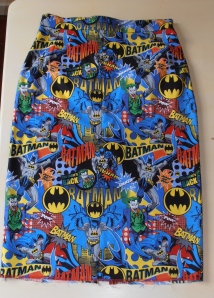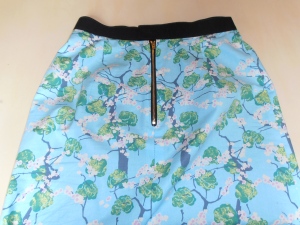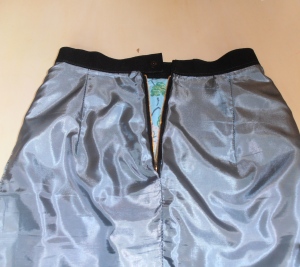 References to “Sew U Home Stretch” seem to crop up regularly on sewing blogs. Having tried “Built by Wendy Dresses” and not found it terribly useful I initially thought I wouldn’t bother with home stretch but it was one of the books people recommended when I got my overlocker so I decided to put in an order on Amazon. Actually, this proved to be rather difficult; although Amazon has all the other Sew U books listed home stretch appears to be rarely available. You can get it through their market place vendors but as you have to pay postage and packing this makes it more expensive. Anyway the stars were in the correct alignment the other day and I eventually managed to order it.
References to “Sew U Home Stretch” seem to crop up regularly on sewing blogs. Having tried “Built by Wendy Dresses” and not found it terribly useful I initially thought I wouldn’t bother with home stretch but it was one of the books people recommended when I got my overlocker so I decided to put in an order on Amazon. Actually, this proved to be rather difficult; although Amazon has all the other Sew U books listed home stretch appears to be rarely available. You can get it through their market place vendors but as you have to pay postage and packing this makes it more expensive. Anyway the stars were in the correct alignment the other day and I eventually managed to order it.
For those of you not familiar with the book it has five sections. The first being about knit fabrics and how to sew them. I found this immensely useful as it offers all sorts of tips I haven’t picked up elsewhere. It talks a lot about over lockers and cover stitch machines as well as how to sew knits with your ordinary machine. It explains the stitches you should use and why some are more suitable then others as well as going into detail about needles and threads. There is a good section on fabrics (doesn’t mention pontes!) including advice on ribbing.
The next three sections deal with the basic patterns; a crew neck t-shirt, a raglan sleeved, hooded sweatshirt and a dress. Each chapter suggests various modifications you can make to the pattern to achieve a number of different looks. I haven’t tried any of the patterns yet but they look simple and the modifications are clearly set out. One issue I have is that like the other Sew U books they use illustrations to show the finished garments and it’s not always easy to imagine them as real clothes.
The last section is about modifying and reworking existing garments.
I can see myself using this book a lot; the first section is invaluable and goes into a lot of detail I haven’t found in other books. I particularly found the section on overlockers useful and although I can’t imagine ever getting a cover stitch machine it was interesting to read about their capabilities.
The t-shirt and raglan top could be very useful basic patterns; I’m not so sure about the dress pattern but that’s possibly because I can’t imagine myself wearing any of the designs she has suggested. The last section I can’t see myself using, I’m not really interested in remodelling clothes, although I am impressed with those that do.
To be clear this is a beginners book and the patterns in it are for simple everyday clothes that can be found in GAP or any number of other shops. It’s strength is that by focussing solely on knits it makes them appear unintimidating; none of the techniques are complicated just a bit different from those you use for woven fabrics.

 One of the benefits of being a friend of the V&A is that you are invited to various members only events. Last night I attended a talk by
One of the benefits of being a friend of the V&A is that you are invited to various members only events. Last night I attended a talk by 
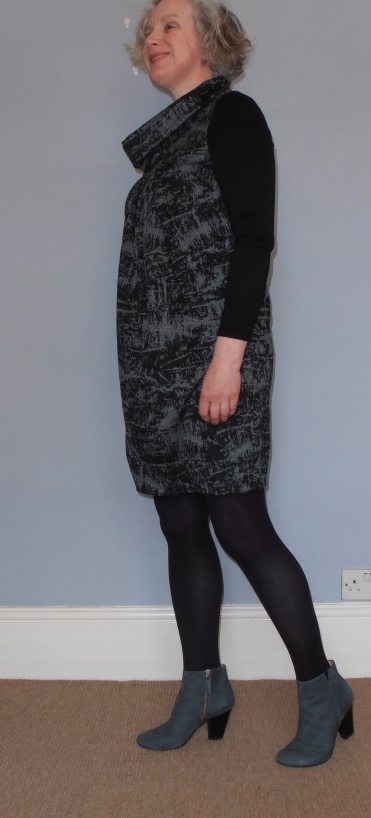
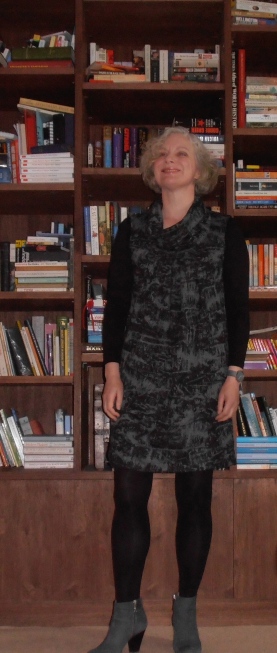
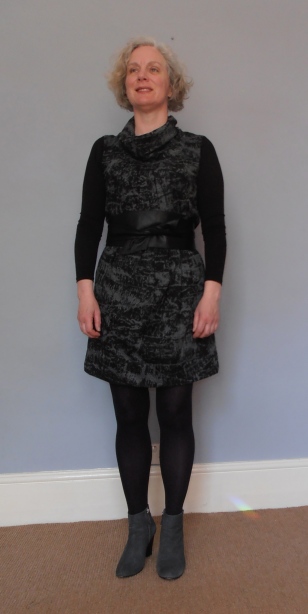

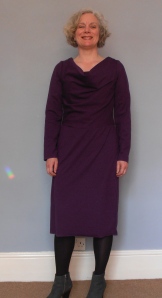
 The pattern I used was Vogue 8873; a new pattern for this season. On the surface V8873 looks like a million other patterns but it’s actually a bit different. For a start it has a lining! I know shock horror a dress with a lining, I always find it irritating when dress patterns don’t have instructions for making a lining; linings make dresses more comfortable and make them hang so much better. Secondly, the front is slightly unusual in that it has a fitted bodice with two pairs of darts and a square neck and then has an over bodice which has the cowl. This adds a level of practicality and modesty that cowl neck dresses sometimes lack. The main bodice itself is quite attractive and would probably look good without the over bodice. I did however wonder whether it was necessary to put in four darts that would never be seen, a couple of darts to give the necessary fitment would possibly have been sufficient.
The pattern I used was Vogue 8873; a new pattern for this season. On the surface V8873 looks like a million other patterns but it’s actually a bit different. For a start it has a lining! I know shock horror a dress with a lining, I always find it irritating when dress patterns don’t have instructions for making a lining; linings make dresses more comfortable and make them hang so much better. Secondly, the front is slightly unusual in that it has a fitted bodice with two pairs of darts and a square neck and then has an over bodice which has the cowl. This adds a level of practicality and modesty that cowl neck dresses sometimes lack. The main bodice itself is quite attractive and would probably look good without the over bodice. I did however wonder whether it was necessary to put in four darts that would never be seen, a couple of darts to give the necessary fitment would possibly have been sufficient.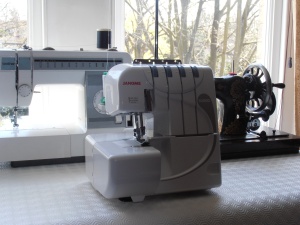

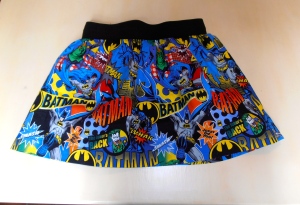
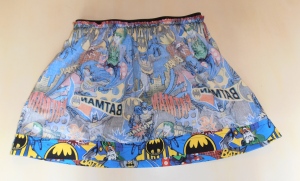 This showed that the skirt was going to be too full so we cut 8cm off each of the rectangles (final size 57cm each) and resewed them. We then marked 8 evenly spaced points on both the waistband and tube and pinned the two together. We sewed the two together by stretching the elastic to the same length as the waistband and stitching with a straight stitch. To strengthen the seam we did the same again but using a zig zag stitch. The skirt was then hemmed and announced as being perfect.
This showed that the skirt was going to be too full so we cut 8cm off each of the rectangles (final size 57cm each) and resewed them. We then marked 8 evenly spaced points on both the waistband and tube and pinned the two together. We sewed the two together by stretching the elastic to the same length as the waistband and stitching with a straight stitch. To strengthen the seam we did the same again but using a zig zag stitch. The skirt was then hemmed and announced as being perfect.